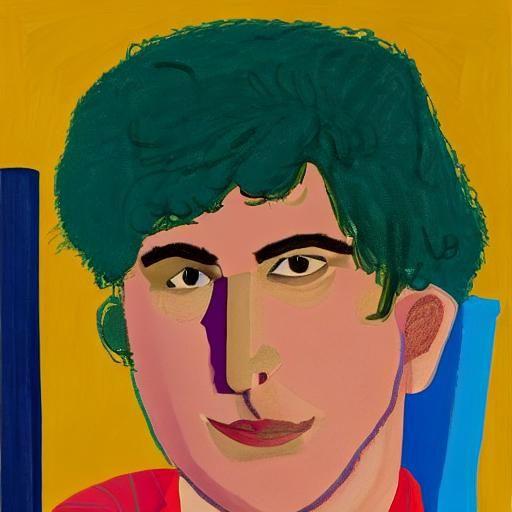Can you get excited about artificial intelligence (AI)? I struggle to. When I asked ChatGPT who my favourite artist was, it said I’d never publicly expressed a preference, because as an art historian I don’t do “subjective opinions”. Evidently, ChatGPT doesn’t subscribe to The Art Newspaper.
Even if it gave the correct answer—Van Dyck—I’d still not be excited. In a famous episode of the 1960s TV series The Prisoner, Patrick McGoohan’s character is presented with an all-knowing computer which, he is told, will make man redundant. But it blows up when he asks it, “why?”. In my view, only human minds have the depth of perception to properly make sense of the world.
This is even more true in art. AI art has so far been exceptionally trivial. Remembering that in 2018 someone paid $432,000 for the AI painting Portrait of Edmond de Belamy still makes me wince. Nevertheless, some people do think AI art has value, and that it is getting better all the time. So, will computers render artists redundant?
Only if we let them—and now is the time to act. At the moment, AI art generators are “trained” by scraping (that is, copying)billions of images from the internet, and effectively reassembling them in a different form. Let us imagine that you want a portrait of me in the manner of David Hockney. The Stable Diffusion AI tool will make you one in a recognisably Hockney style, like one of his iPad works (even if it is not really recognisably me). But its understanding of Hockney’s style comes from images of Hockney’s work taken without his consent, and without compensation.
Is that fair? Legal cases brought against Stable Diffusion by artists including Karla Ortiz say not. If I publish a Hockney image without his permission, he can sue me. If I publish a collage made up of a number of David Hockney images, he can still sue me. But if a computer publishes a collage made up of hundreds of processed Hockney images, is that different? This matters when an artist’s style is as distinctive and recognisable as Hockney’s.
Getty Images is also suing Stable Diffusion for scraping its images. Getty says the aim is not to secure damages but a new legal status quo. It seems clear copyright law needs to be reassessed in the face of the AI development.
But there are dangers. Getty is bringing its case in the UK, which is notable since UK law extends copyright even to photographs of works by long dead artists such as Van Dyck. EU law, by contrast, declares such photographs to be in the public domain. This disparity already creates disadvantages for British art historians; copyright notices on the British Library website, for example, say, “Public Domain in most countries other than the UK.” (Another Brexit bonus).
We must hope, therefore, that any copyright case involving AI doesn’t make the use of images of historic works more difficult than it already is. Stable Diffusion’s AI can make a portrait of me in the manner of Van Dyck (see above), but it would be a stretch to say that somehow Van Dyck’s heirs should be traced for permission, or awarded a fee.
Not that there could be much of a fee to award. I recently asked the National Gallery in London how much money it made selling images. The answer was astonishing: none. In fact, the costs of processing image sales outweigh income raised. It seems that for both living and dead artists, the existing copyright model is no longer fit for purpose.

























